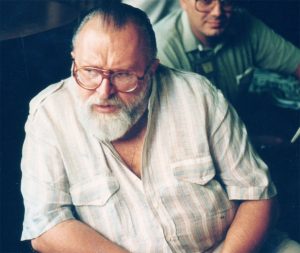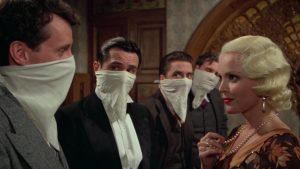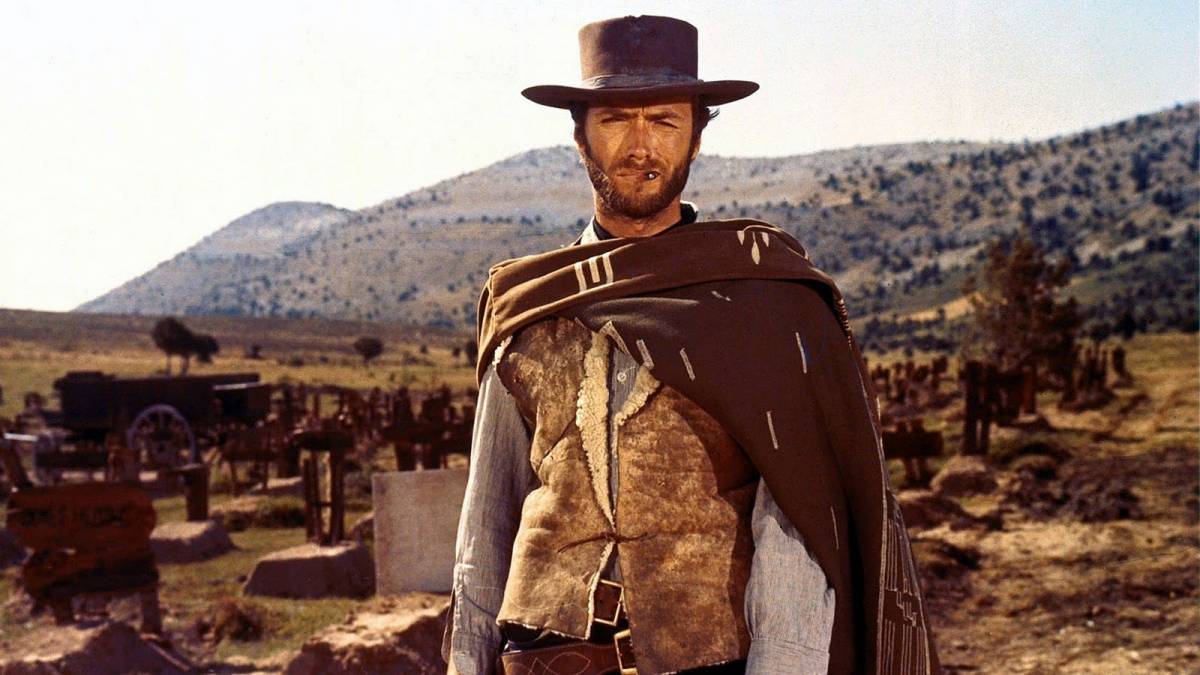The man who brought the spaghetti to westerns
It was 90 years ago today that the man who put spaghetti into westerns was born.
Italian film director, producer and screenwriter Sergio Leone was one of the most iconic movie-makers of his generation and the man who made actor Clint Eastwood a superstar.
Born in Rome on 3 January 1929, Leone was the son of cinema pioneer Vincenzo Leone and silent film actress Edvige Valcarenghi.
 After watching his father work on film sets, Leone began his own career in the film industry at the age of 18 after dropping out of law studies and began as an assistant to Vittorio de Sica during the movie The Bicycle Thief in 1948, going on to work as an assistant director on several large-scale international productions shot at the Cinecitta Studios in Rome, notably Quo Vadis (1951) and Ben-Hur (1959).
After watching his father work on film sets, Leone began his own career in the film industry at the age of 18 after dropping out of law studies and began as an assistant to Vittorio de Sica during the movie The Bicycle Thief in 1948, going on to work as an assistant director on several large-scale international productions shot at the Cinecitta Studios in Rome, notably Quo Vadis (1951) and Ben-Hur (1959).
When director Mario Bonnard fell ill during the production of the 1959 Italian epic The Last Days of Pompeii, Leone stepped up to complete the movie and went on to make his directorial debut with The Colossus of Rhodes (1960).
But in the mid-1960s the thirst for historical epics was waning and the Italian industry was experiencing a sharp downturn as ticket sales dropped and the Hollywood studios withdrew in the wake of some catastrophic financial failures.
Although Leone is generally seen as the pioneer of the European Western craze that saved Cinecitta, he was able to find backing for his first project largely as a result of the success of a series of German Westerns based on Karl May’s pulp-fiction novels about Winnetou, last of the Mescalero Apache, and his blood-brother Old Shatterhand.
The first of the Winnetou films, The Treasure of Silver Lake, was a phenomenal success across Europe and a further 11 Westerns based on May’s books were produced between 1962-68. Several cheap Westerns came out of Spain in the wake of the first Winnetou films and Leone’s A Fistful Of Dollars (1964) was actually made on the back of another bigger-budget Western entitled Pistols Don’t Argue (1964), shot concurrently using the same Spanish locations.
When Akira Kurosawa's samurai adventure Yojimbo was released in 1961, Leone immediately recognised the potential for a Western remake and the rest, as they say, is history.
The first of his so-called ‘dollars trilogy’, A Fistful of Dollars starred Clint Eastwood as the "man with no name" who profits from a feud between two rival gangs in a little town called San Miguel.
Eastwood was not the first actor approached to play the main character, with Leone originally intending Henry Fonda to play the role. But the production company couldn't afford to employ such a big Hollywood star, so Charles Bronson was offered the part. He declined, as did Henry Silva, Rory Calhoun, Tony Russel, Steve Reeves, Ty Hardin and James Coburn.
Leone then turned his attention to Richard Harrison, an expatriate American actor who had recently starred in the very first Italian western, Duello nel Texas. Harrison, however, had not been impressed with his experience on that film and refused. The producers later presented a list of available, lesser-known American actors and asked Harrison for advice. He suggested Eastwood, who he knew could play a cowboy convincingly from his work on the television series Rawhide.
A Fistful of Dollars was an Italian-German-Spanish co-production, so there was a significant language barrier on set. Leone did not speak English and Eastwood communicated with the Italian cast and crew mainly through stuntman Benito Stefanelli, who also acted as an unlicensed interpreter for the production and would later appear in Leone's other pictures.
Similar to other Italian films shot at the time, all footage was filmed silent, and the dialogue and sound effects were dubbed over in post-production. For the Italian version of the film, Eastwood was dubbed by stage and screen actor Enrico Maria Salerno, whose "sinister" rendition of the man with no name's voice contrasted with Eastwood's darkly humorous interpretation.
But in contrast to the earlier Euro-Westerns that preceded it, it was clear from the opening credits of A Fistful of Dollars that Leone wasn’t about to imitate existing conventions with the film opening with a hazy white spot on a blood-red screen to create an almost psychedelic effect that sets the tone for Leone’s fantasy vision of the west.
The title sequence resounds to the sound of gun shots and Ennio Morricone’s distinctive score, strikingly different to the orchestral themes used on American Western soundtracks up to that time.
Despite the fact they had been at school together, Leone initially resisted hiring Morricone and only met with the composer at the request of his producers. Leone had considered Morricone’s score to an earlier Western, Gunfight at Red Sands, to be boring but Morricone won him over by agreeing with this opinion, claiming it was the result of producer pressure.
Morricone’s collaboration with Leone was a major part of the film's success and they went on to cement one of the most fruitful composer-director partnerships in the history of cinema, Morricone scoring all of Leone’s subsequent films.
Promoting A Fistful of Dollars was difficult, because no major distributor wanted to take a chance on a faux-Western and an unknown director. The film ended up being released in September, typically the worst month for sales. It was shunned by the Italian critics, who gave it extremely negative reviews. But at a grassroots level its popularity spread and it grossed US$4 million in Italy. American critics felt quite differently, with Variety praising it as having "a James Bondian vigor and tongue-in-cheek approach that was sure to capture both sophisticates and average cinema patrons".
In January 1967 the film premiered in the United States grossing US$4.5 million for the year and it eventually went on to gross US$14.5 million in its American release. In 1969 it was re-released, earning US$1.2 million in rentals.
Leone's next two films, For a Few Dollars More (1965) and The Good, the Bad and the Ugly (1966), completed what has come to be known as the ‘dollars trilogy’ with each film being more financially successful and more technically accomplished than its predecessor.
As well as making Eastwood a star they also made Lee Van Cleef a major force in Italy, resurrecting an acting career that had never risen above playing villainous bit parts in American films of the 1950s.
After appearing alongside Eastwood in For a Few Dollars More and The Good, the Bad and the Ugly, Van Cleef went on to make another 10 Italian Westerns.
In 1967 Leone was invited to the United States to direct Once Upon a Time in the West (1968) for Paramount Pictures, with both Fonda and Bronson in the cast.
The film was shot mostly in Almería, Spain, and Cinecitta in Rome with some scenes shot in Monument Valley, Utah. The film starred Bronson, Fonda, Jason Robards and Claudia Cardinale and was a violent, nearly three-hour long, dreamlike meditation on the mythology of the American Old West.
Perhaps unsurpassed as a retribution drama, the film's script was written by Leone and his longtime friend and collaborator Sergio Donati from a story by Bernardo Bertolucci and Dario Argento. Before its release, however, it was ruthlessly edited by Paramount, which perhaps contributed to its low box-office results in the United States. Nevertheless, it was a huge hit in Europe, grossing nearly three times its US$5 million budget among French audiences, and highly praised by North American film students. It has since come to be regarded by many as Leone's best film.
After Once Upon a Time in the West, Leone directed Duck, You Sucker! Released in 1971, the Mexican Revolution action drama stars James Coburn as an Irish revolutionary and Rod Steiger as a Mexican bandit conned into becoming a revolutionary.
For the rest of the 1970s Leone continued to produce and, on occasion, step in to reshoot scenes in other films but after turning down an offer to direct The Godfather his next and final directorial effort was Once Upon a Time in America (1984), a project he had devoted 10 years of his life to.
 Based on the novel The Hoods by former mobster Harry Grey, Once Upon a Time in America focused on a quartet of New York City Jewish gangsters of the 1920s and 1930s who had been friends since childhood. The finished four-hour film featured Robert De Niro and James Woods.
Based on the novel The Hoods by former mobster Harry Grey, Once Upon a Time in America focused on a quartet of New York City Jewish gangsters of the 1920s and 1930s who had been friends since childhood. The finished four-hour film featured Robert De Niro and James Woods.
It received a raucous standing ovation at the Cannes Film Festival, but Warner Brothers felt it was too long and drastically cut it down to two hours for the American market, abandoning its flashback structure for a linear narrative. This version suffered heavy criticism and flopped. The original version, released in the rest of the world, achieved somewhat better box office returns and a mixed critical response. When the original version of the film was released on home video in the US, it gained major critical acclaim, with some critics hailing the film as a masterpiece.
Leone died on 30 April 1989 of a heart attack at the age of 60, with his body buried in the cemetery of Pratica di Mare in Rome.







